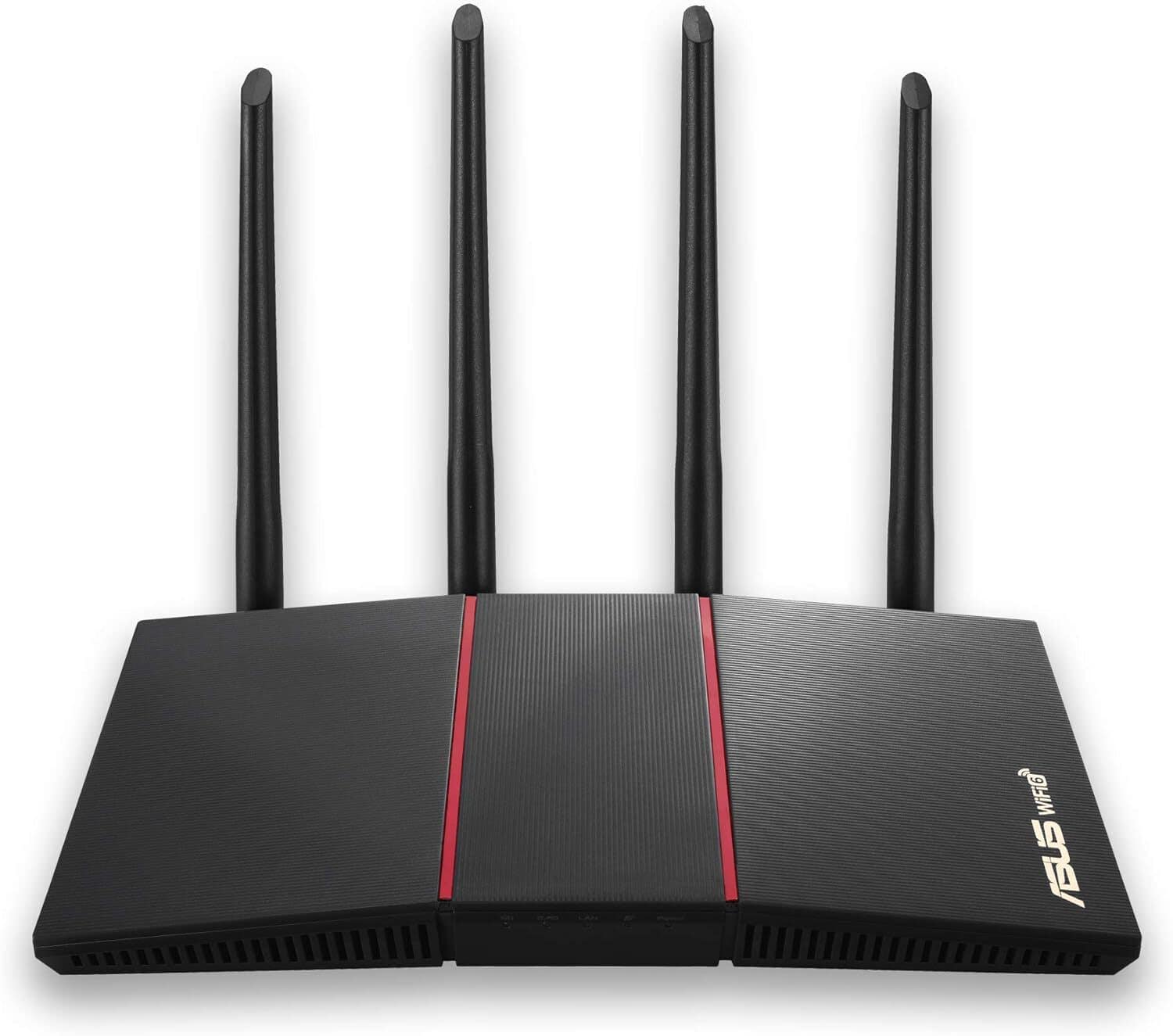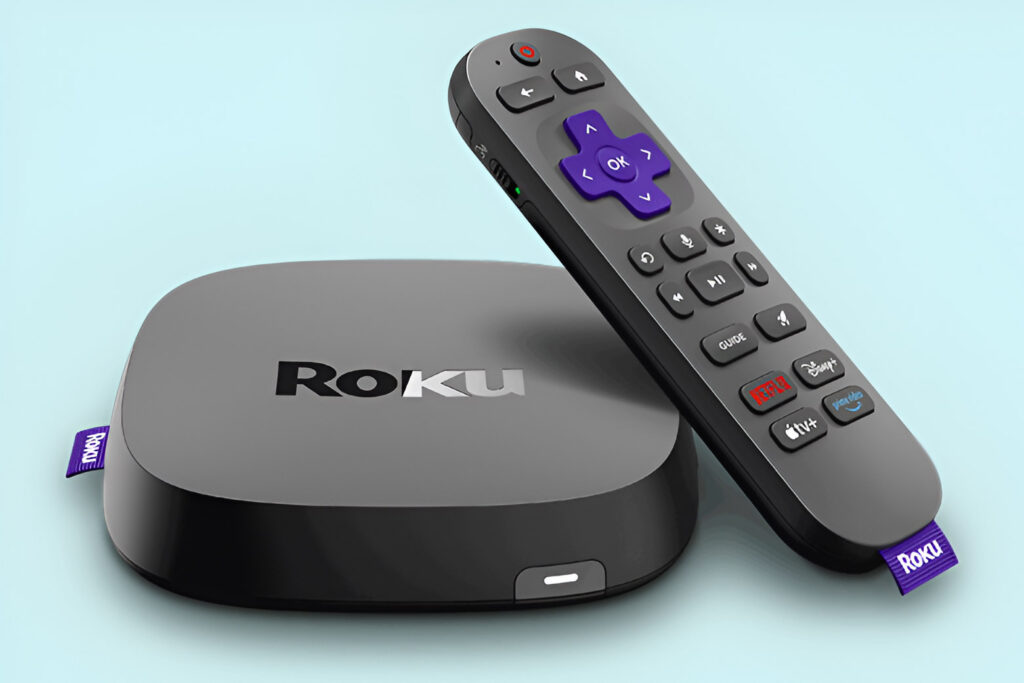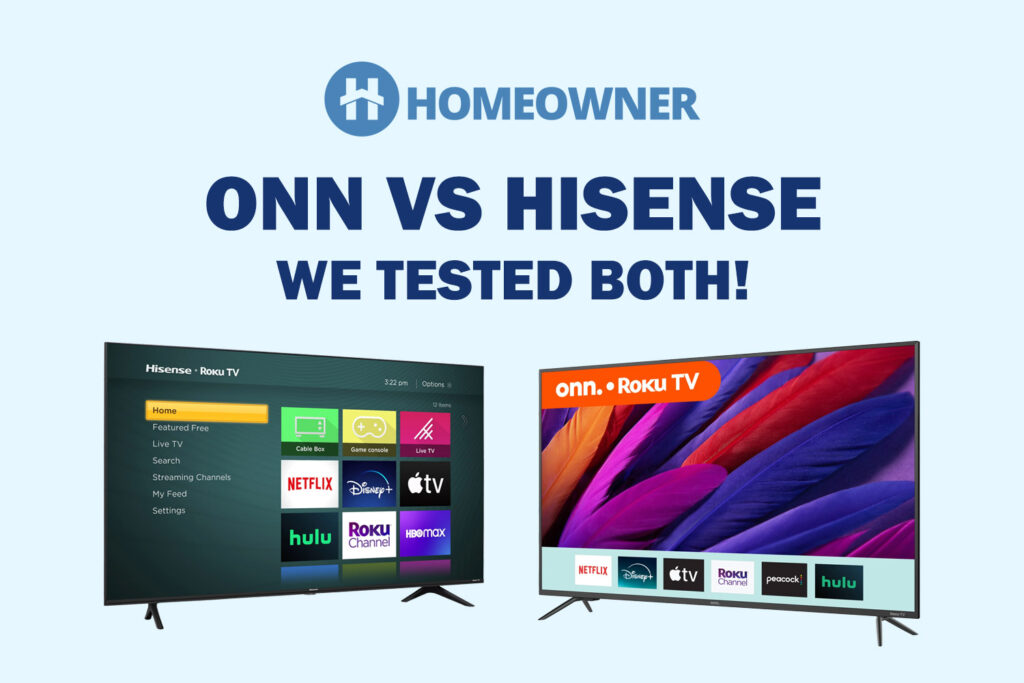Security cameras are a great addition to keeping your home or office assets safe. But no matter how ‘good' your cameras are, if you don't have strong WiFi connectivity in place, they'll be less reliable and may stop recording at any point in time.
So, it's a good idea to pair it with a router that can efficiently handle security cameras. But what qualifies a router to be efficient? One that covers a decent area with strong and stable signals, offers good speeds, features, and stable network performance.
But then, there are many self-proclaimed offerings in the market. A quick & uninformed decision, and you might end up with a sub-standard device that won't be suitable for your Blink, Ring, IP, or CCTV cameras. That’s why this list comes as a lifesaver.
7 Best Routers for Security Cameras in 2025
But wait, how did I come up with this selection?
For the past three weeks, I’ve been thoroughly testing 19 of the popular security camera routers and ended up picking the following 7 models. They’re checked and vetted for various aspects like coverage, network performance, speed, security features, and more.
You just have to determine your budget, needs, and area and pick a suitable routing unit. Without further ado, let’s get into it.
List Overview: I have tried to include options of varying prices, WiFi ranges, and performances. Alongside their detailed reviews, I listed the pros and cons, so you can weigh on them to find your ideal piece.
1. Best Overall: ASUS RT-AX86U Pro
- New-generation WiFi 6 - Enjoy ultrafast speeds up to 5700 Mbps with the latest WiFi 6 (802.11ax) and 160MHz channels.Power Supply : 19 V with max. 2.37 A current / 19.5 V with max. 2.31 A current or 12 V with max.3 A current / 19.5 V with max. 2.31 A current.
- Mobile Game Mode - Minimize lag and latency for mobile gaming with just a tap on the ASUS Router app
- True 2 Gbps wired and wireless speeds - Aggregated 2 Gbps WAN connections, wired 2.5 Gbps port and WiFi 6
- Commercial-grade Security Anywhere – Protect your home network with AiProtection Pro, powered by Trend Micro. And when away from home, ASUS Instant Guard gives you a one-click sharable secure VPN.
- Easy Extendable Network – Enjoy seamless roaming with rich, advanced features by adding any AiMesh-compatible router.
Tagged as a “gaming router”, Asus RT-AX86U Pro comes as an upgrade to Asus RT-AX86U and presents a host of features to make it to the top.
Some of the notable ones include a Wi-Fi 6 standard, a 2.5 Gbps ethernet port, a USB 3.2 port, and a powerful quad-core processor, added with networking technologies to ensure your security cameras never disconnects.
Speeds & Performance
The RT-AX86U bestows a throughput capacity of 5700 Mbps, where the cap on its two operating bands is as follows:
| 5 GHz: 4804 Mbps | 2.4 GHz: 861 Mbps |
To test the raw speeds, I paired the router with Xfinity 1.2 Gbps plan and used my Dell XPS laptop. In close proximity (20 feet), the download and upload speeds averaged 1.16 Gbps and 121 Mbps, respectively.
And at the farthest point in the apartment (45 feet), the respective speeds were around 876 Mbps and 96 Mbps. At first glance, the results seem excellent, and any internet-bound tasks like gaming, streaming, video conferencing, and others are viable.
But when it comes to security cameras, consistency is equally important, as any connection drops, and it can’t send the feed to your mobile device.
From my test, it’s safe to say that the device is well capable of maintaining signals throughout the day. Another thing worth mentioning here is the gaming experience with this router was top-notch.
Thanks to specialized features like game acceleration, game boost, and a multi-gig port, games like Valorant ran at 15ms ping and a frame rate of 70, making it one of the better routers for gaming.
WiFi Coverage & Devices Capacity
Another aspect worth scrutinizing when selecting a router for security cameras is its range. Theoretically, RT-AX86U Pro comes at a 2,500 Sq Ft range. And with three high-performance beamforming antennas, it doesn’t disappoint, as signals were spread over 2,200 Sq Ft, well within the reach of my installed cameras.
It further entails AiMesh tech support that lets you expand the coverage further by pairing a compatible router/extender. Furthermore, the integration of MU-MIMO and OFDMA works for stabilizing the signals sent to multiple devices at once.
So even after connecting 54 devices, the security camera never experienced any jitters or dropouts.
Security Features
Security is probably the most alluring aspect of Asus routers, and nothing’s different with RT-AX86U Pro. It’s in-built with the AiProtection software suite with advanced features like malicious site blocking, infected device prevention, and blocking.
Besides, there’s WPA3 encryption, VPN, and a guest network for added security. The best part of it is you don’t need to pay a penny for it.
👉 Related Reading: 5 Best WiFi Extenders for Security Cameras in 2025
Conclusion
Overall, the Asus RT-AX86U Pro is a high-end WiFi router that works best with security cameras. It's designed for gamers and high-intensive users, hence it serves your purpose exceedingly well despite connecting multiple bandwidth-hogging devices.
Pros
- Wi-Fi 6 standard
- Multi-Gig LAN/WAN port
- Great wireless coverage
- Excellent throughput
- Excellent security tools
- Handles multiple devices
Cons
- No Tri-Band frequency
- Pricey
2. Best Runner-Up: TP-Link Archer AXE75
- Tri-Band WiFi 6E Router - Up to 5400 Mbps WiFi for faster browsing, streaming, gaming and downloading, all at the same time(6 GHz: 2402 Mbps;5 GHz: 2402 Mbps;2.4 GHz: 574 Mbps)
- WiFi 6E Unleashed – The brand new 6 GHz band brings more bandwidth, faster speeds, and near-zero latency; Enables more responsive gaming and video chatting
- Connect More Devices—True Tri-Band and OFDMA technology increase capacity by 4 times to enable simultaneous transmission to more devices
- More RAM, Better Processing - Armed with a 1.7 GHz Quad-Core CPU and 512 MB High-Speed Memory
- OneMesh Supported – Creates a OneMesh network by connecting to a TP-Link OneMesh Extender for seamless whole-home coverage.
TP-Link Archer AXE75 just loses the top spot due to its lesser throughput capacity on each of its operating bands but delivers more usable speeds. That’s possible with an additional 6 GHz band that comes with Wi-Fi 6e wireless standard.
Aside from that, an extended range, and ability to handle multiple devices and others make it a great pick for security cameras.
Speeds & Performance
The Wi-Fi 6E-enabled router has a maximum throughput capacity of 5400 Mbps, and the respective speed on each band is as follows:
| 6 GHz: 2402 Mbps | 5 GHz: 2402 Mbps | 2.4 GHz: 574 Mbps |
Reflective of its pricing, the router delivers solid performance in my throughput tests with the Xfinity Gigabit plan.
Its score of 934 Mbps and 38 Mbps on the close-proximity test (20 feet), respectively, for downloads and uploads, was faster than others in this list. The results were similar even on the 40 feet test, with AXE75 managing 687 Mbps and 25 Mbps, respectively.
Not only faster, but the WiFi analyzer app also demonstrated a smooth flow of data throughout the day. This was even the same when I played online games, streamed 4K content, and surfed the web. None of the security systems had any slowdowns.
WiFi Coverage & Devices Capacity
Coverage-wise, Archer AXE75 stays a bit ahead of Asus RT-AX86U Pro with a theoretical cap of 3,000 Sq Ft. With six external antennas at bay, the signals reach a maximum of 2,600 Sq Ft, making it suitable for mid-sized homes.
And worth mentioning here, my security camera fell within the coverage radius and let me track ongoing events throughout the day.
The device further brings MU-MIMO and OFDMA to boost the signal strength on connected devices. So, I could pair up to 71 devices used for streaming, gaming, video conferencing, and others with ease. Ignore the manufacturer’s claim of handling 200 devices, that’s just a hyperbole.
Security Features
Archer AXE75 falls behind the Asus router in terms of security as it lacks any free-to-use advanced features like malware detection & elimination, website blocking, and DDoS protection.
But there still are features like WPA3 encryption, VPN, access control, guest network, and auto-firmware update. These should keep the network data safe and secure.
Moving on, the parental control features are, however, great. It lets you manually block any websites, monitor the online time of your kids, and pause the internet anytime. These come in handy, especially at a time when online education is a necessity.
👉 Related Reading: Wired vs Wireless Security Cameras: Which Is Best?
Conclusion
Ease of use, fast performance, and Wi-Fi 6e & tri-band support make the TP-Link Archer AXE75 a great choice for users looking for a future-proof router.
Although it lacks a multi-gig port, its wireless speeds combined with good signal range are enough to use it with security cameras. But it lacks any advanced security for free, the reason why it's ranked second. Read the full review.
Pros
- New 6 GHz band
- Tri-Band operation
- Solid throughput
- Great WiFi range
- Robust parental controls
Cons
- No multi-gig port
3. Best Mesh WiFi System: Eero 6 Plus
- GIGABIT SPEEDS FOR LESS - Supports wifi speeds up to a gigabit, without the premium price tag. eero 6+ is our most affordable gigabit system ever. Backward-compatible with previous-generation eero devices.
- WI-FI 6 GETS A BANDWIDTH BOOST - eero 6+ supports additional wifi bandwidth on the 160 MHz radio channel (that’s just wifi talk for faster connectivity). With the eero 6+, there’s enough bandwidth for the whole family to work, stream, and video chat—all at the same time.
- CONNECTIVITY YOU CAN COUNT ON - eero 6+ gives you all the connectivity with all the reliability. So you can work from home with confidence—and say goodbye to dropped video calls. Or keep your smart home running, even when you’re away.
- EXPERIENCE THE EERO TRUEMESH DIFFERENCE - eero’s patented TrueMesh technology intelligently routes traffic to reduce drop-offs and dead spots.
- SET UP IN MINUTES - The eero app guides you through setup and allows you to manage your network from anywhere.
Next on my list is a top-rated mesh system, Eero 6 Plus, that comes as a replacement for Eero 6 with better radios and wider channels. Its 160 MHz channels ensure you totally exploit the gigabit connection, even in a congested building like an apartment.
Besides, its long wireless range and device-handling capacity keep it much ahead of traditional wireless routers suitable for security cameras.
Speeds & Performance
Eero 6 Plus has an aggregated throughput capacity of 3000 Mbps, where the division on each band is as follows:
| 5 GHz: 2402 Mbps | 2.4 GHz: 574 Mbps |
The availability of 160 MHz channels and a given throughput makes it ideal for Gig Internet. My iPhone 13 on the Xfinity plan, placed 20 feet away from the main router, manages a 941 Mbps download speed and 103 Mbps upload speed.
At the same time, the download and upload speed at 40 feet was around 661 Mbps and 71 Mbps, respectively. But keep in mind maximum speeds aren’t always a true mirror of performance, and consistency is equally important.
And the MU-MIMO enclosed by the mesh system ensures the devices, including recording cameras, receive stable signals every time. The gaming and streaming performance of this mesh was also excellent.
WiFi Coverage & Devices Capacity
I tested this mesh WiFi in my 2,500 Sq Ft test lab, where I installed the security camera at the vestibule. Courtesy of its powerful internal antennas, the live feed never dropped.
Besides, compared to its predecessor, signals are stronger in the nooks and even support video calling and stock trading. You can expand the range even further by adding another node to the setup.
As mentioned earlier, the MU-MIMO comes in handy when it comes to connecting multiple devices. Paired with it, the OFDMA and beamforming take the number to around 67, which is great for large homes and workspaces.
Security Features
Compared to the predecessor, nothing new is brought into Eero 6 plus in terms of security. However, it does incorporate the WPA3 security standard to ensure the protection of shared data over the network.
It also includes a complimentary VPN that enables anonymous access to websites while safeguarding your identity. Besides, using the Eero app, you can add or remove any device as needed.
There’s a fair share of parental controls like sleep time, WiFi pausing, and an internet dashboard to track the total online time of the users.
👉 Related Reading: Is Ring Worth It? 2025 Home Security Review
Conclusion
I tasted the Eero 6 Plus pastry, it’s creamy and satisfying. Cooking metaphors aside, the mesh system includes many handy features to get you through any kind of internet-bound task with ease.
Its primary limitation is its security features, as you don’t have access to advanced features, free or paid, the reason why it’s ranked third. Learn more in its full review.
Pros
- Fast throughput
- Reliable app
- Great range
- Easy to install and simple design
Cons
- Weaker security
4. Best for Live Streaming: Netgear RAX50
- Coverage up to 2,500 sq. ft. for up to 25 devices.
- Fast AX5400 Gigabit speed with WiFi 6 technology for uninterrupted streaming, HD video gaming, and web conferencing
- Connects to your existing cable modem and replaces your WiFi router. Compatible with any internet service provider up to 1Gbps including cable, satellite, fiber, and DSL
- Plug in computers, game consoles, streaming players, and more with 4 x 1G Ethernet ports Share a storage drive with any connected device and create a personal cloud storage to access from anywhere using the 1 x 3.0 USB port
- NETGEAR Armor protects your family's WiFi with an automatic shield of security across all your connected devices with a 30-day free trial
Now that I have reached halfway, presenting you Netgear RAX50, a 200-dollar router with capable and decently powerful features to handle your security cameras well.
Some of the notable features include dual-band Wi-Fi 6 support, a four-antenna setup with a decent range, and a 90-day Armor software subscription. It came as a replacement for RAX43 and surely betters it with its overall performance.
Speeds & Performance
Netgear RAX50 uses dual-band WiFi with the Wi-Fi 6 protocol to add up an AX5400 speed rating. The speed share on each band is as follows:
| 5 GHz: 4802 Mbps | 2.4 GHz: 574 Mbps |
In my test lab, RAX50 excelled in sending large datasets when up close (20 feet) to my Dell Xps laptop. Using the Ookla speed test app, the test system with Xfinity 1 Gbps plan registered 931 Mbps of data flow for downloads and 34 Mbps for uploads.
The router’s bandwidth fell down when I moved it to a 40 feet distance. At this point, the respective download and upload speeds were closer to 621 Mbps and 23 Mbps. This, compared to many routers in this range, performed exceedingly well.
Now coming to the performance, the available speed ran streaming and gaming tasks very well, and thanks to consistent connections, I never missed a security feed.
WiFi Coverage & Devices Capacity
Netgear RAX50 comes at a stipulated range of 2,500 Sq Ft, which at one glance seems great for a mid-range offering.
In my test, the results came out good, except that it missed a few spots in the nooks of my test lab, taking the actual coverage to around 2,100 Sq Ft. It means the router won't disappoint the security cameras installed in a mid-sized apartment.
Added to it, technologies like OFDMA and MU-MIMO pair well with beamforming antennas to connect up to 25 devices at once. These included my iPhone 13, iPad Pro, Dell XPS laptop, PlayStation 5, and others.
Security Features
The RAX50 has got staple features like WPA3, VPN, guest network, and auto-firmware update. These are for protecting the data transmitted through the network.
Aside from that, there’s a 90-day free trial to Netgear Armor security software with some advanced features like malware detection & elimination, intrusion detection, weekly scans, and others.
👉 Related Reading: 12 Home Security Mistakes You Don’t Want To Make
Conclusion
The RAX50 offers strong performance across connected devices with its dual-band Wi-Fi 6 support and four-antenna setup. It ensures excellent network stability through features like MU-MIMO and beamforming, making it a suitable choice for gamers, streamers, and similar users. For more details, read the Nighthawk RAX50 review.
Pros
- Customization potential
- Excellent close-up speeds
- Decent range
- Quick setup
Cons
- Middling device handling capacity
5. Best Security Controls: Synology RT2600ac
- 1.7GHz Dual-core processor for fast, uncompromising performance
- Powerful 4x4 802.11ac wave 2 radios with MU-MIMO and up to 2.53Gbps breakthrough wireless speeds
- Smart Connect for seamless transition between maximum speed or range
- Hardware accelerated Layer 7 traffic control and monitoring
- Dual WAN capable for load balancing and failover support
Now, presenting you with another versatile yet affordable, Synology RT2600ac. It packs almost everything, including dual-band WiFi, a decent range, a wide selection of ports, and free yet advanced security features & parental controls.
I tested it alongside RT1900AC only to find out the performance-based upgrades the new model brings.
Speeds & Performance
As evident from the name itself, Synology RT2600ac has a maximum speed value of 2600 Mbps, and the speed on each band is as follows:
| 5 GHz: 1733 Mbps | 2.4 GHz: 800 Mbps |
The router did well in my throughput testing. For the sake of consistency, I paired it with the Xfinity 1 Gbps plan as used for the rest.
And in a shorter range (20 feet), the RT2600AC average around 907 Mbps and 30 Mbps, respectively, for downloads and uploads. When I moved the client to 40 feet, it registered respective speeds of 439 Mbps and 20 Mbps. That’s fast enough for surveillance cameras.
To test out its consistency, I engaged the router in a series of tasks for about an hour. These include online gaming with PS5, streaming on my OLED TV, video calling on my Dell XPS laptop, tax filing on my smartphone, and the security camera running side-by-side. And there weren’t many major jitters or signal drops.
WiFi Coverage & Devices Capacity
As for coverage, Synology RT2600AC comes as a much better prospect than RT1900AC, coming at a stipulated value of 2,000 Sq Ft.
When placed in the middle, I found that it covers most of my grandpa’s 1,500 Sq Ft house with reliable WiFi to every corner. The numbers might vary on the number of furniture and walls, but overall the coverage is more than decent.
Moving on, technologies like beamforming and MU-MIMO work for signal stability, so there were stable connections on over 45 devices at once.
Security Features
After Asus RT-AX86U Pro, Synology matches or probably supersedes the levels with its security features. To start with, there’s this “Threat protection” feature that details the history of attacks on the devices, prevents accessing malicious websites, and conducts network scans periodically.
Besides, there are features like DDoS protection, VPN plus server, WPA3, guest network, and access control for added security. The best part is Synology won’t charge anything for it in the near future.
If you want to learn more about these features in detail, read my full review of the Synology RT2600AC.
Conclusion
To conclude, Synology RT2600AC presents a nice assortment of tools and features to let you filter website content, monitor usage, schedule bandwidth priority, and secure your wireless network & cameras from malicious cyber attacks.
Besides, it's wirelessly capable enough to run your security cameras lag-free and handle any network-based tasks. However, older Wi-Fi standards and inferior speeds compared to the top recommendations have pushed it down the list.
Pros
- Advanced security tools
- Solid throughput performance
- Easy to install & manage
- MU-MIMO and beamforming
- Good port setup
Cons
- Old Wi-Fi standard
- Middling range
6. Best Budget Option: Linksys MR8300
- Provides up to 2,000 square feet of Wi-Fi coverage for 20plus wireless devices
- Works with existing modem, simple setup through Linksys App. A mobile device with Android 4.4 or iOS 9 and higher, Bluetooth preferred
- Enjoy 4K HD streaming, gaming and more in high quality without buffering
- Tri band router delivers the fastest combined Wi-Fi speeds to all your devices
- Tri band Wi-Fi speeds up to 2.2 Gbps (5 GHz / 400 Mbps) plus (5 GHz / 867 Mbps) plus (2.4 GHz / 867 Mbps)
Next, I have Linksys MR8300, which adds an extra band to the previous Wi-Fi 5 setup, MR7350 to make way for more available channels.
Its four external antennas are able to fill your small apartment or home with WiFi data and can form a mesh network with Linksys Velop extensions. Let’s find out how these features translate well in real life.
Speeds & Performance
Linksys MR8300 is a Wi-Fi 5 tri-band router on a budget with a speed rating of AC2200. The speed division on each band is as follows:
| 5 GHz (1): 867 Mbps | 5 GHz (2): 867 Mbps | 2.4 GHz: 400 Mbps |
I tested MR8300 as a primary router with an automatic band steering which only selects the fastest band. The selected plan was Xfinity 600 Mbps.
In my close proximity test (15 feet), it managed download speeds of 536 Mbps and upload speeds of 21 Mbps, still faster than many in this range. At a 30 feet distance, the speeds clocked 259 Mbps and 13 Mbps for downloads and uploads, respectively.
The maximum speed attained at a distance seems ideal for the smooth operation of any of your installed smart cameras. Not only speeds, it scores 7/10 in terms of consistency, which means you can do anything without being anxious about losing connection in between.
WiFi Coverage & Devices Capacity
Linksys claims the router is a perfect fit for a small-medium house, with a stipulated range of 1,500 Sq Ft. In my test, it missed a few spots at my grandpa’s 1,500 Sq Ft house but still managed to cover a 1,100 Sq Ft space with strong signals. That’s still great for any small to mid-sized apartment or house.
Besides, MU-MIMO makes it capable of handling 25 smart devices at once. It includes laptops, computers, smartphones, gaming consoles, security cameras, and others.
Security Features
Unlike its throughout, security features aren’t great and nowhere close to what Synology RT2600AC offers, free or paid. Nevertheless, it has got features like WPA3 to secure your passwords, VPN to let you remote access any website, guest network to temporarily add any device, and auto-firmware update.
These, I reckon, are good enough for any household network ecosystem. Other than security, its parental control features like tracking online time and internet pausing are handy for most digital mothers out there.
👉 Related Reading: Best Home Security Companies in 2025
Conclusion
If you’re seeking an upgrade over your ISP-supplied router. Despite being a budget offering, it's capable of handling multiple devices. But its security features are average and hence position.
Pros
- Triple bands
- Excellent throughput
- Good range
- Easy setup with Linksys app
Cons
- Middling range
7. Cheapest Option: ASUS RT-AX55

- Wireless Standard: Wi-Fi 6 (802.11ax)
- WiFi Range: Up to 3,000 Sq Ft
- Devices Capacity: Up to 30
- Band Frequency: Dual-Band
- Ports: 1 x Gig-E WAN + 4 x Gig-E LAN
The ASUS RT-AX55 is one of the most affordable WiFi 6 routers that still performs well for running multiple home security cameras. It offers dual-band AX1800 speeds—up to 1201 Mbps on 5 GHz and 574 Mbps on 2.4 GHz—and includes support for OFDMA and MU-MIMO. These features help with managing several video streams at once, especially when you have other devices on the network. Setup is quick using the ASUS Router app, and it works with most home layouts under 2,500 square feet.
For homeowners on a budget who want a simple upgrade from older routers, this is a very good option for keeping cameras online without overloading the network.
Speeds & Performance
| 5 GHz: 1201 Mbps | 2.4 GHz: 574 Mbps |
I tested the RT-AX55 with four 1080p IP cameras, along with phones, tablets, and a smart TV all connected at once. The router kept up with the video streams, even when checking footage remotely or watching live views on multiple screens. It doesn’t include a dedicated QoS feature, but performance stayed steady thanks to WiFi 6 features like 160 MHz channel support and efficient bandwidth handling.
On a 300 Mbps connection, it delivered full speed over both wired and wireless connections. Security camera feeds stayed responsive without lag or signal interruptions.
WiFi Coverage & Devices Capacity
In testing, the RT-AX55 covered about 2,300 square feet with stable signal across every room. I placed it centrally in a one-story home and saw good performance in the garage, backyard, and near entry points—key locations for most outdoor cameras. The router uses four external antennas with beamforming to help direct signal where it’s needed.
It supported 20+ devices at once, including six security cameras. MU-MIMO and OFDMA kept the network responsive and avoided congestion. While it’s not meant for huge homes or large-scale camera systems, it works well for small to medium houses with several IP cameras installed.
Security Features
The RT-AX55 includes ASUS AiProtection Classic with WPA3 support. It blocks known malicious sites, detects suspicious devices, and includes basic parental controls. You can manage access for specific devices or set time restrictions, which can be useful if you run separate camera feeds on different networks or want to pause activity on other devices.
All features are handled through the ASUS app. You can monitor connected devices, update firmware, and adjust security settings from your phone. No subscription is required for the built-in tools.
Conclusion
If you’re setting up a basic home security camera system and want to keep costs down, the ASUS RT-AX55 is a very good option. It supports reliable video streaming, covers the typical size of a single-family home, and includes helpful features to keep devices secure. It doesn’t have advanced hardware, but for smaller homes with standard camera setups it gets the job done.
Pros
- Affordability
- Easy-to-use app
- Long WiFi range
- Lifetime free security
- Reliable performance
Cons
- No USB port
- Speed drops over a distance
Frequently Asked Questions
Yes and No. It depends on the amount of CCTV cameras you have, which router you select, and its capabilities. If it's powerful enough, you don't need a separate router. However, if you need an affordable alternative solution, consider WiFi extenders for security cameras.
Yes, you can. For that, use the network cable (PoE- Power over Ethernet) for both power and video transmission. Just connect the router to the camera using the cable, and it will get network access and a power supply at the same time.
To keep your security camera operating in the best condition, it’s important to receive signals throughout the day, and such a router is Asus RT-AX86U Pro. It’s the best available in the market in terms of performance and range.
Yes, they are. Good mesh routers fulfill both the criteria required for a security camera: consistency and range. But these can get pretty expensive, and a standalone router should be a decent enough choice.
Verdict
Security cameras now emerged as a pivotal part of our house or office, which is why you need a capable router. I hope my curated list has helped you make a wise choice. However, if you're still confused, here are my final recommendations:
- If you need the best option in terms of features and performance and don’t want to cheap out, go for Asus RT-AX86U.
- If you need top-notch, I would ask you to have a look at a mid-tier, Synology RT2600ac. Or, if you want a mesh system, opt for an affordable Eero 6 Plus.
- Finally, for users with a minimal budget looking to upgrade from their ISP-rented routers, ASUS RT-AX55 is your best bet.











